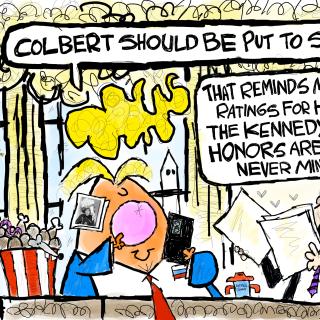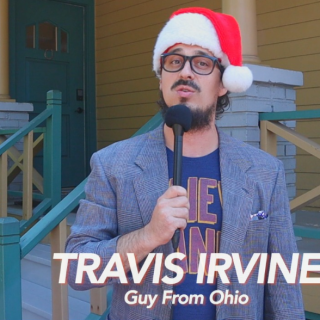Because I’m attracted to tales of romance or redemption, it’s not surprising that I love Beauty and the Beast. It is, after all, a fairy tale that combines both romance and redemption.
But that doesn’t mean I love every version of Beauty and the Beast equally.
Who wouldn’t be won over by Disney’s 1991 animated flick, which retold the charming French tale with the help of beautiful songs by Howard Ashman and Alan Menken? On the other hand, the first time I saw Disney’s stage adaptation of the musical, I was disappointed to find it diluted the original’s power by adding tot-pleasing slapstick. It wasn’t until I saw a toned-down reboot in 2012 that the stage show claimed a place in my heart.
Now comes Disney’s live-action film version, and I find myself of two minds. The meat of the story—the growing affection between the beautiful Belle (Emma Watson) and the monstrous Beast (Dan Stevens)—is as touching as ever. But director Bill Condon (Gods and Monsters) and his writers weigh it down with embellishments designed to answer questions that really didn’t need to be answered.
Prime example: What happened to Belle’s mother or, for that matter, the Beast’s mother? In the original, we just assumed they were both long since dead, but screenwriters Stephen Chbosky and Evan Spiliotopoulos apparently thought it was so important to explain their absence that they added whole new scenes for just that purpose. That’s one reason the new film runs a child-unfriendly 129 minutes.
Condon and his screenwriters also added changes meant to adapt the tale to modern tastes. The biggest is Belle’s transformation from a wistful dreamer to, basically, a feminist hero.
In the original, Belle “escaped” humdrum village life by reading romantic tales about maidens finding their handsome Prince Charmings. It may not have been PC in 2017 terms, but it set her up for a nice reality check when she began falling for a creature who looked decidedly unprincely.
In the new version, Belle still loves books, but she seems motivated as much by rebellion as by romance. Indeed, when she tries to teach a young village girl to read, she’s viciously attacked by her neighbors, as if they belong to an early French version of the Taliban.
Granted, it’s important to give girls strong role models, but I can’t help feeling Belle’s story would be more interesting if the script had given her room to grow. Let’s face it, both the old and the new Belle are plucky as all get out. What’s different is that the new Belle wears her pluck from scene one.
Also less interesting in this version is Belle’s father, Maurice (Kevin Kline). He’s still an amateur inventor, but he seems younger and less doddering this time around, making us less concerned for his safety.
At least Gaston (Luke Evans), the hunky hunter who’s determined to marry Belle whether she wants him or not, is as vain and obnoxious as ever. But right-hand man LaFou (Josh Gad) has undergone a well-publicized change, as there’s more than a subtle hint that he’s gay. This, in itself, would have little effect on the story except that it forces Disney to rehabilitate the one-time weasel’s personality to avoid being accused of homophobia.
As always, the tale begins with a fateful encounter between an ugly hag and a self-centered prince (Stevens) who refuses to accept her rose in return for shelter. After revealing herself to be a beautiful sorceress, the intruder then drops a curse on the prince that turns him into the Beast, with the promise that he’ll remain that way forever unless he can find love before her magical rose loses its last petal.
Years later, after being chased by wolves on his way to market, Maurice takes shelter in the prince’s castle and is astonished to find the craggy home filled with talking utensils such as Lumiere the candlestick (Ewan McGregor), Cogsworth the clock (Ian McKellen) and Mrs. Potts the teapot (Emma Thompson)—all of them former servants who were doomed by the curse along with their master. Unfortunately, he also finds the hot-tempered Beast, who is angered by the intrusion and makes Maurice his prisoner.
Then Belle arrives in search of her father, and she immediately offers to take Maurice’s place in the castle dungeon. At the same time, she unknowingly raises the utensils’ hopes that she and their master will somehow fall in love and finally break the spell that imprisons them all.
Besides all the changes of varying success, Condon’s film is weakened by early scenes that try to overwhelm us rather than quietly winning us over. (The excessively loud soundtrack at the preview screening I attended didn’t help.) But from the moment Belle meets the Beast, the story begins regaining its charm.
Though the new film adds a song or two that are less than classic, the original tunes are as strong as ever. The highlights are “Be Our Guest,” sung by Lumiere while plates and cutlery dance in patterns reminiscent of a Busby Berkeley musical; and the title song, sung by Mrs. Potts while Belle and the Beast share a tender moment on the dance floor.
In these and other scenes, the cinematography and production design are stunning, whether they depict Belle’s storybook village or the Beast’s cavernous castle. Though I saw the film in 3-D, I suspect they would almost equally stunning in two dimensions.
Anyway, what really sells the story is the unlikely romance between Belle and the Beast, winningly portrayed by Watson and Stevens. You can’t go too far wrong when you start with strong material, and this film starts with the best.
Rating: 3½ stars (out of 5)
Beauty and the Beast (rated PG) opens Friday (March 17) at theaters nationwide.



